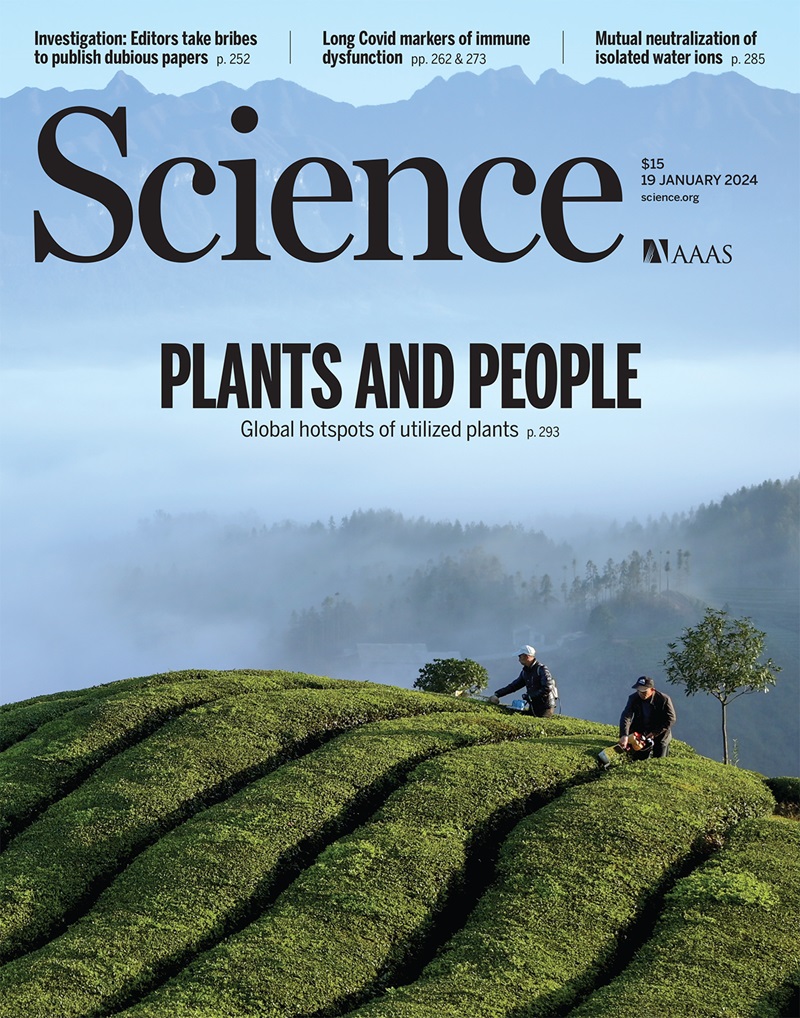Human Tears Contain a Chemosignal
IF 44.7
1区 综合性期刊
Q1 MULTIDISCIPLINARY SCIENCES
引用次数: 19
Abstract
Emotional tearing is a poorly understood behavior that is considered uniquely human. In mice, tears serve as a chemosignal. We therefore hypothesized that human tears may similarly serve a chemosignaling function. We found that merely sniffing negative-emotion–related odorless tears obtained from women donors induced reductions in sexual appeal attributed by men to pictures of women’s faces. Moreover, after sniffing such tears, men experienced reduced self-rated sexual arousal, reduced physiological measures of arousal, and reduced levels of testosterone. Finally, functional magnetic resonance imaging revealed that sniffing women’s tears selectively reduced activity in brain substrates of sexual arousal in men.
人类眼泪中含有一种化学信号
情感流泪是一种鲜为人知的行为,被认为是人类独有的行为。在小鼠中,眼泪是一种化学信号。因此,我们假设人类的眼泪也可能具有类似的化学信号功能。我们发现,仅仅嗅闻女性捐献者流出的与负面情绪相关的无味眼泪,就会降低男性对女性脸部图片的性吸引力。此外,男性在嗅闻这种眼泪后,自我评价的性唤醒程度降低,生理唤醒程度降低,睾酮水平降低。最后,功能磁共振成像显示,嗅闻女性眼泪会选择性地降低男性大脑中性唤起基质的活动。
本文章由计算机程序翻译,如有差异,请以英文原文为准。
求助全文
约1分钟内获得全文
求助全文
来源期刊

Science
综合性期刊-综合性期刊
CiteScore
61.10
自引率
0.90%
发文量
0
审稿时长
2.1 months
期刊介绍:
Science is a leading outlet for scientific news, commentary, and cutting-edge research. Through its print and online incarnations, Science reaches an estimated worldwide readership of more than one million. Science’s authorship is global too, and its articles consistently rank among the world's most cited research.
Science serves as a forum for discussion of important issues related to the advancement of science by publishing material on which a consensus has been reached as well as including the presentation of minority or conflicting points of view. Accordingly, all articles published in Science—including editorials, news and comment, and book reviews—are signed and reflect the individual views of the authors and not official points of view adopted by AAAS or the institutions with which the authors are affiliated.
Science seeks to publish those papers that are most influential in their fields or across fields and that will significantly advance scientific understanding. Selected papers should present novel and broadly important data, syntheses, or concepts. They should merit recognition by the wider scientific community and general public provided by publication in Science, beyond that provided by specialty journals. Science welcomes submissions from all fields of science and from any source. The editors are committed to the prompt evaluation and publication of submitted papers while upholding high standards that support reproducibility of published research. Science is published weekly; selected papers are published online ahead of print.
 求助内容:
求助内容: 应助结果提醒方式:
应助结果提醒方式:


